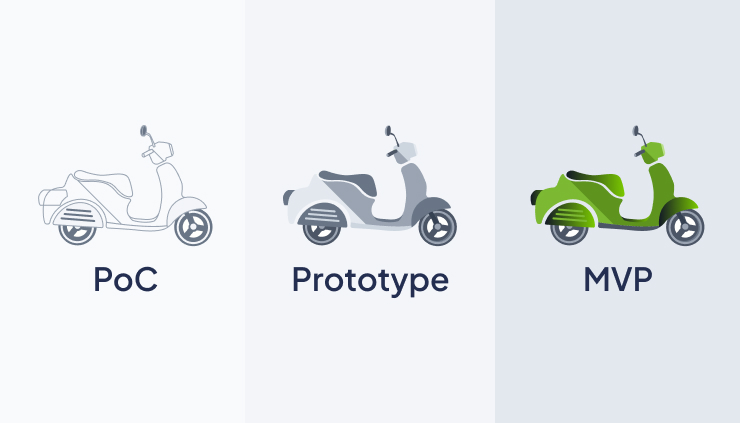What Computer Vision is: Applications, Benefits and its Use in Software Development
In response to a request to name objects or phenomena associated, for example, with a forest, we indicate the words “tree”, “animals”, “thicket”, etc. Despite the apparent simplicity of the task, in order to complete it, the most complex processes take place in our minds, which, until recently, machines were deprived of. So, an abstract understanding of processes, our own experience, based on millions of examples of interaction with the outside world, endows us with the ability to think. However, currently, digital technologies have even greater possibilities, and one of them is computer vision. The innovation, so to say, reproduces human vision for identification and processing things by computers, by analogy with the human brain.
The active use of computer vision technology in the fields of human activity is the result of the development of AI and computing capabilities. According to experts, by 2030 the computer vision market will reach more than $42 billion, and the total annual growth rate from 2020 to 2030 will approach 16%. Read more about what computer vision is and how it is used in practice, below.
What Computer Vision Is
Computer vision is one of the areas of AI, the principle of which is to train a computer to better understand the world around it. For this purpose, digital images and deep learning models are used, through which it is possible to accurately identify and classify objects, as well as to adjust possible reactions to them.
In AI, computer vision is used in the process of developing automated systems designed to interpret visual information (photos, films) in a similar way to how people do it. The very technology of computer vision was created in order to ensure the process of learning a computer, interpreting images pixel by pixel. From a technical point of view, the technology facilitates the extraction of visual data by computers and the management and analysis of the results through complex programs. One of the catalysts for the development of computer vision and the scope of development is the large amount of data generated by mankind every day — 2.5 quintillion bytes.

How Does Computer Vision Work?
The key question for machine learning is: what is the principle of the human brain? How can it process be recreated using existing algorithms? The difficulty in solving it lies in the fact that very few real theories have been put forward, and therefore the assumptions that neural networks imitate the work of the brain are questionable.
The same goes for computer vision. Without accurate understanding of how image recognition by our brain and eyes occurs, it is impossible to say whether the algorithms for processing visual data used in the fields of human activity are really so effective and whether there is at least some similarity between our intellectual processes and information processing by computer.
Since computer vision can be classified as pattern recognition, the way to train a computer is to download thousands and millions of images and then process them with algorithms to identify patterns and organize them. Subsequently, the algorithms enable the machine to start self-learning, which is used primarily to replace human labor.
The main methods that are used to distinguish and classify objects are deep learning and convolutional neural networks. The role of convolutional neural networks is to separate visual elements into small components with their label. The tags perform convolutions and then make a recommendation about the image being viewed using the tertiary function. After a few cycles of convolution, the computer begins to perceive and classify images as a person.
Computer vision works similar to the way we solve puzzles. So, having all the elements of the puzzle, we collect the desired image from them, and the operation of neural networks is based on the same principle. Using certain actions and filters, the machine brings all the components together, learning to think based on the work done and its results.

Applications Of Computer Vision
Such field of machine learning as computer vision has been successfully integrated into the products and benefits that we use every day in everyday life.
CV In Self-Driving Cars
Computer vision is necessary for the orientation of unmanned vehicles in the environment. The video captured by the camera from different angles is processed using special software, in which road edges, road signs, other vehicles, cars, and pedestrians are detected in real mode. Thus, the car gets the opportunity to move around the streets without problems and bypass possible obstacles, safely delivering passengers to the place of arrival.
CV In Facial Recognition
Facial recognition applications are another area in which computer vision is applied. Such products work on the principle of matching images of faces with the personalities of specific people. The algorithms work in the following way: facial features in the photo are detected, after which these features are analyzed and compared with databases. In tablets and phones, face recognition is at the heart of owner authentication. Social media apps use facial recognition to detect and tag users. And, of course, the movie-familiar scene of searching for a criminal by identifying matches in the database is a demonstration of how computer vision is used in the work of law enforcement agencies.
CV In Augmented Reality & Mixed Reality
Augmented and mixed reality are technologies used in computing devices (tablets, phones, smart glasses) for overlaying and embedding virtual objects in the picture of the real world. How does it work? Augmented reality devices define objects in the real world, while simultaneously determining a place in the display where this object can be embedded. So, computer vision technology allows you to find flat surfaces — countertops, floors, and walls, which, in turn, is a component of the function of determining the size and location of objects in the world.
CV In Healthcare
Computer vision has contributed to the development of medical technology. Modern algorithms are successfully used to automate the search for malignant nevi (moles) on the skin or to identify alarming matches in the analysis of an x-ray, or MRI image.
Read also: AI for Healthcare
Challenges of Computer Vision
Practice shows that teaching computer equipment the ability to see and identify objects of the surrounding world, just as we do, is very difficult. And the reason does not only lie in the complexity of the technology itself and its implementation in a computer but also in the lack of understanding the way our brain works when analyzing visual information.
However, the application of computer vision basically facilitates the work of a person, which is especially noticeable in such computer functions as:
- image categorization. The software can determine the category of the creature/object in the photo. This feature is embedded in the algorithms of social networks, which easily and quickly determine the categories of images;
- during the object discovery process, the machine can use the classification data to find and catalog the instance more quickly. In industry, this function has found application in the work of quality control systems, when defects and breakdowns of equipment, and goods are detected;
- observation of objects that move. When an object is detected, its tracking will continue at the same point, for which a live video stream or sequentially taken images are used;
- extracting images based on content of the image. Unlike metadata label search methods, the content-based recognition algorithm relies on computer vision to search, analyze, and extract images from a large amount of data. For this purpose, automatic annotations to pictures are used, replacing visual tags.
Read also: Machine Learning for Fraud Detection
The introduction of computer vision algorithms is promising for many branches of human activity. The Software Development Hub team will help you create a product with a computer vision function, taking into account the specifics of your business, tasks, and market requirements. An integrated approach to studying the idea and its viability, possession of a wide technical stack, and expertise allow us to implement the most complex and interesting projects in the healthcare industry, etc.
Categories
Share
Need a project estimate?
Drop us a line, and we provide you with a qualified consultation.









